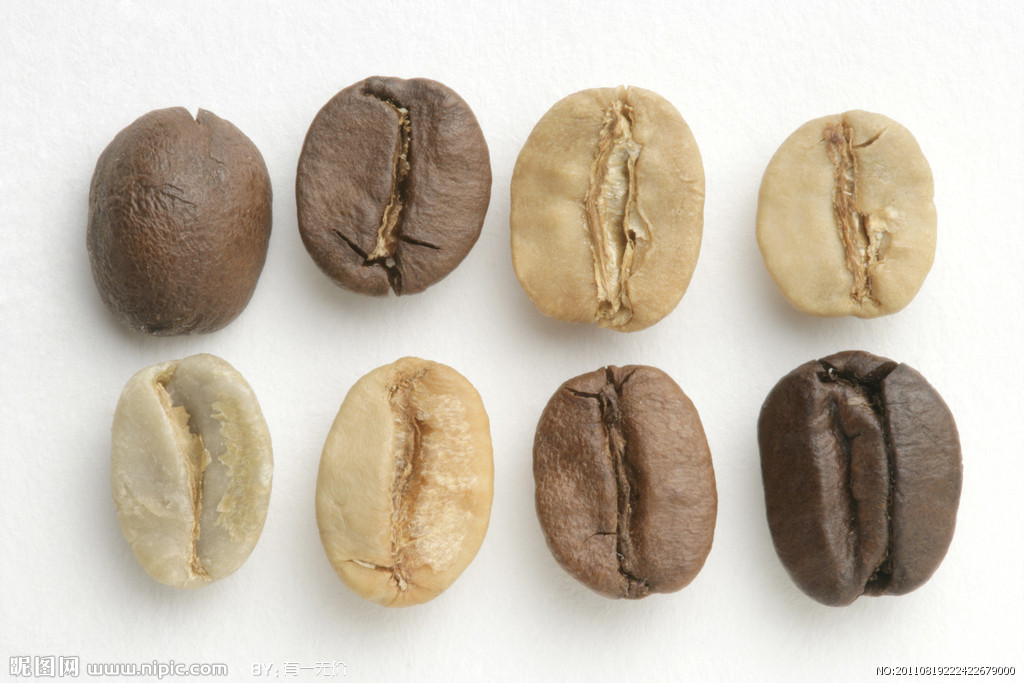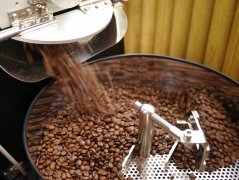Terminology for bakers-training for bakers in baking techniques
balance point
When the roaster is fully preheated and the internal temperature of the boiler is about 200 degrees, put the prepared green beans into the oven. At this time, the raw beans in the furnace will begin to carry out endothermic reaction, the internal organization of the raw beans began to carry out endothermic reaction, that is, the sound beans began to absorb heat, the temperature in the furnace are absorbed into their own body, so the temperature in the furnace began to slowly drop, and when the temperature inside the furnace and the temperature in the raw beans gradually consistent, is the time to stop, this time point is called the equilibrium point.
This is one of the most important moments in coffee flavor and aroma. Because coffee roasters different models, equilibrium point time will have deviation, so roasters to master their own roaster equilibrium point. That is to say, the equilibrium point time corresponding to the amount of raw beans, the equilibrium point time corresponding to different seasons, the equilibrium point time of liquefied gas (LPG) or natural gas (LNG) and other heat sources, the horizontal length of the internal chimney and external chimney connected to the bean dryer, or the vertical height, etc., each equilibrium point is different, and it is necessary to observe carefully.
temperature recovery point
After the equilibrium point, the furnace remains unchanged for a few seconds or minutes. Then the temperature will warm up and this time point will be the temperature point. Although different models of temperature recovery point is different, but most of the semi-hot air type, direct fire baking machine equilibrium point and temperature recovery point is almost the same, that is, the temperature began to rise slowly.
In general, direct fire baking takes about 30 seconds---one minute between the on-board equilibrium point and the return temperature point, and there is no change in temperature. The semi-hot air will be at equilibrium point immediately after the transition to temperature point.
After passing through the temperature recovery point, the moisture of raw beans begins to evaporate, so it emits earthy smell, which varies with the moisture content of raw beans and the amount of fire supply.
pale yellow dot
After the thaw point, the furnace temperature begins to rise slowly. For high baking, pale yellow spots are characterized by direct baking at about 4 minutes and semi-hot or hot air baking at 6 minutes. The light yellow point is also the time point when the flavor of raw beans changes into sweet taste. The sweet taste felt at the light yellow point varies with the processing method of raw beans. The sweet taste of raw beans avoiding washing by sunlight is more obvious. In addition, sweet taste appeared at different time points depending on the moisture content of raw beans.
yellow dot
To yellow point, the green beans surface wrinkles will appear slowly, this is the phenomenon of evaporation of green beans. In endothermic reactions, the yellow dot is the point at which most water evaporates. The density of green beans also affects the amount of wrinkles. For example, if green beans with the same moisture content but different densities are baked at the same time, the higher density green beans will produce more wrinkles than the lower density green beans.
For example, the Brazilian bean of the New World bean, with a moisture content of 10%, has less wrinkles on the surface of the original bean at the time of the yellow dot, while the Kadura bean of Colombia, with a moisture content of 10%, has deeper wrinkles on the surface of the original bean.
exploded
At the end of the endothermic reaction phase, the first burst occurs at the same time as the thermal reaction.
The sound and time of the first burst vary with the variety, density and activity of the endothermic reaction stage. Under the condition of high temperature baking, the first explosion occurred in 7 minutes for direct fire baking, while it occurred in about 9 minutes for semi-hot air baking or full hot air baking.
A burst represents the formal start of the chemical reaction of raw beans. Generally, we take the start of continuous burst as the standard. Before this, there will be a single burst sound (when the organization of the raw beans changes, there will be a part of the raw beans with a burst sound). Under this condition, please do not take the single burst sound as the benchmark. After single burst sound, the sound of continuous burst will begin soon, and this time point is easily used as a confirmation benchmark for explosion.
Once the explosion begins, you'll smell a sour smell. As time goes on, the crackling sound becomes louder and stronger. For example, raw beans at higher altitudes are more sour than raw beans at lower altitudes, and sun-dried beans are more sour than washed beans.
Turn down the heat when the sour taste reaches deep into your nose. If you continue without reducing the fire, the temperature will show a black curve and continue to rise; after the nasal irritation, confirm and adjust the fire, the temperature rise in the furnace will gradually slow down and show a blue curve.
Second explosion (unabated fire at first explosion)
As I said, if you don't adjust the fire power when the first blast is intense, it causes the temperature in the furnace to rise. If you use fresh green beans with more than 10% moisture content for baking, the finished product after turning down the heat during the second explosion will have a brighter reddish brown color than the raw beans without adjusting the heat. If you use a direct fire roaster, you may need to adjust the heat at the same time as the second explosion or just before the second explosion begins. Because direct fire if the heat is not enough, it will cause the second explosion time is late, or the overall baking time is lengthened. This adversely affects the taste and flavor of coffee, causing intense bitterness and bitterness that stays in the mouth for a long time, resulting in significant loss of aroma.
Second explosion (fire reduction when first explosion)
After a blast, the fire is adjusted to weaken the blue curve. The blue curve is gentle, and there is no downward trend on the whole, but a slow upward trend. If there is a downward trend, it means that the fire is too, in this case baked beans are darker, said dark black, bitter taste when drinking, it will become a plain coffee without characteristics.

Important Notice :
前街咖啡 FrontStreet Coffee has moved to new addredd:
FrontStreet Coffee Address: 315,Donghua East Road,GuangZhou
Tel:020 38364473
- Prev

Advantages and disadvantages of roaster single coffee
The characteristics of garden beans to roast coffee beans as they understand them. There are three types of coffee roasters on the market: Direct Fire Roaster, Half Hot Air Roaster, Hot Air Roaster, and there are a variety of commercial coffee bean roasters. Such as PROBAT, Diedrich, San Franciscan, Toper, Garan
- Next
What is the temperature of water needed to make coffee? the best temperature for coffee.
Coffee needs temperature balance since the PID temperature control system was installed in the coffee machine, there has been a frenzy of temperature control. Professionals said: we need more accurate temperature! almost all manufacturers have no objection to this. When we think about these changes and developments, some people may ask: in such a busy bar, is the precise temperature control of the machine so important? Common sense of science
Related
- Beginners will see the "Coffee pull flower" guide!
- What is the difference between ice blog purified milk and ordinary milk coffee?
- Why is the Philippines the largest producer of crops in Liberia?
- For coffee extraction, should the fine powder be retained?
- How does extracted espresso fill pressed powder? How much strength does it take to press the powder?
- How to make jasmine cold extract coffee? Is the jasmine + latte good?
- Will this little toy really make the coffee taste better? How does Lily Drip affect coffee extraction?
- Will the action of slapping the filter cup also affect coffee extraction?
- What's the difference between powder-to-water ratio and powder-to-liquid ratio?
- What is the Ethiopian local species? What does it have to do with Heirloom native species?

